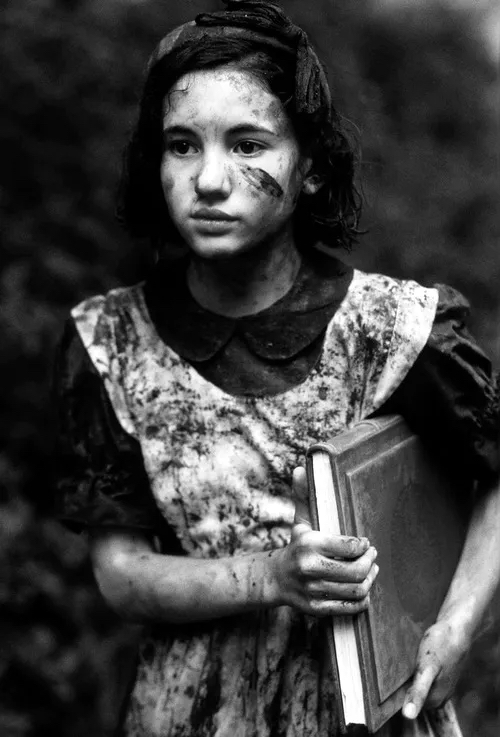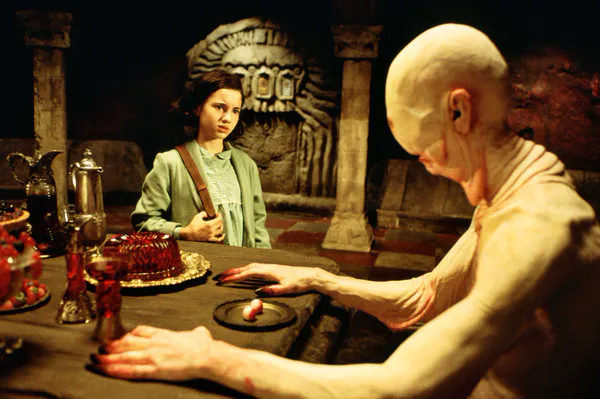Ophelia and the Monster
So for the Pan’s Labyrinth, which is a horror movie, but there are not too many usual horror movie editing signs, I am talking about those jump scare shots. There are more about how the movie shapes its environment, as those dark, scary,gloomy scenarios. The most “jump scare” scene in that movie I’ve seen is when the monster without eyes suddenly gets up and chase after Ophelia. Pan’s Labyrinth is a very good example of cross cut editing because it introduces the story line of the civil war. A lot articles have mentioned about Pan’s Labyrinth two storylines because it’s uniqueness. Also, The masterful place of this film is that it does not have too many scary scenes, but by setting up the atmosphere, the audience can be filled with fear of the unknown world in the movie.
Pan’s Labyrinth uses cut on action in many parts of its film. The camera easily transitions through the simplest of edits, for example the scene where Ophelia goes to sit on the bed beside her mother. The shot starts with Ophelia walking towards the bed and ends with her sit at the edge. Next the edit cuts to show her feet coming up and putting a blanket on herself and her mother. This easy transition made it a more effortless to zoom in and bring the viewer in on the intimate conversation that would soon take place.
Cinematic sound is one of the fundamental elements of the film medium. It changes the film from a purely visual medium to a combination of audio-visual media, and makes the relative spatio-temporal structure expressed by visual factors in silent films in the past turn into a relative spatio-temporal structure expressed by visual and auditory factors. The sound in Pan’s Labyrinth, the most outstanding sound is the background music. For horror movies, quiet time is like walking in an abyss, and the quieter it is, the more it can arouse people’s fear of the unknown. Music, on the other hand, can somehow reveal what’s going on. Obviously there is no music that can give the audience a sense of mystery and fear.


